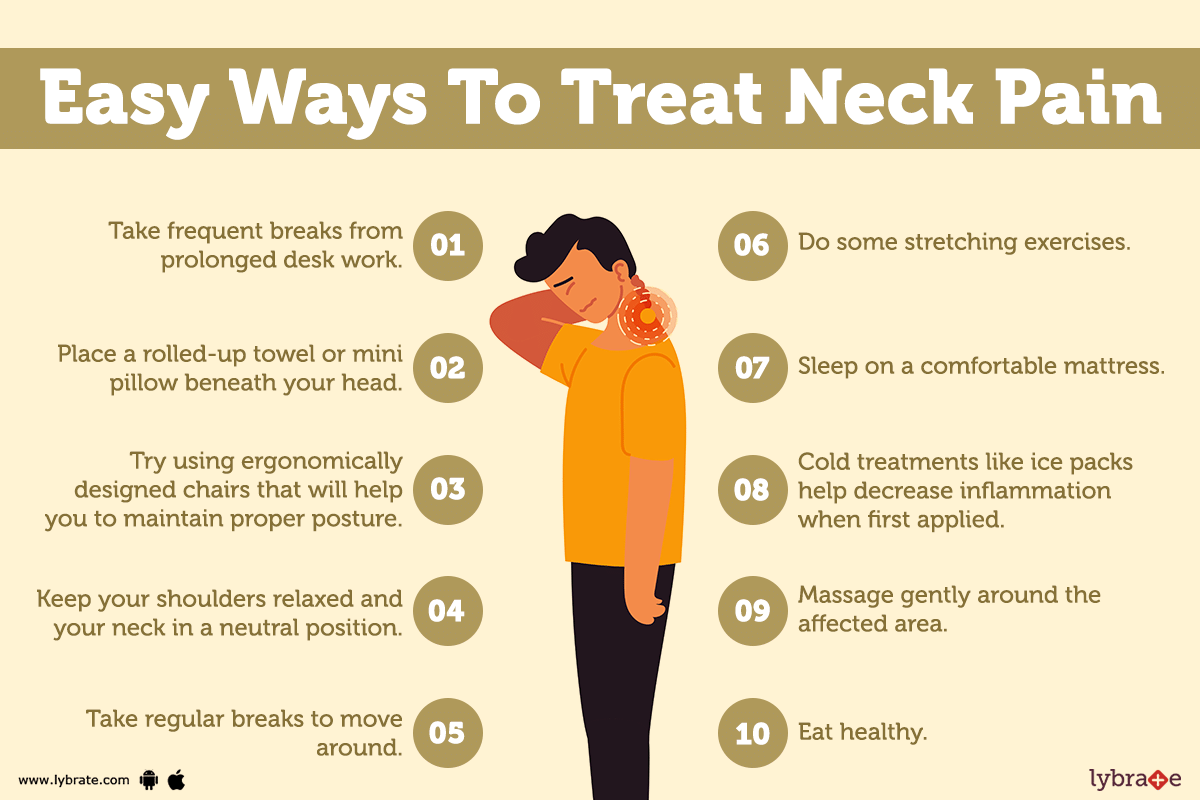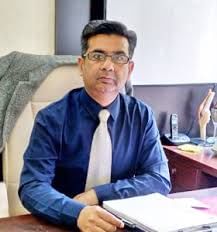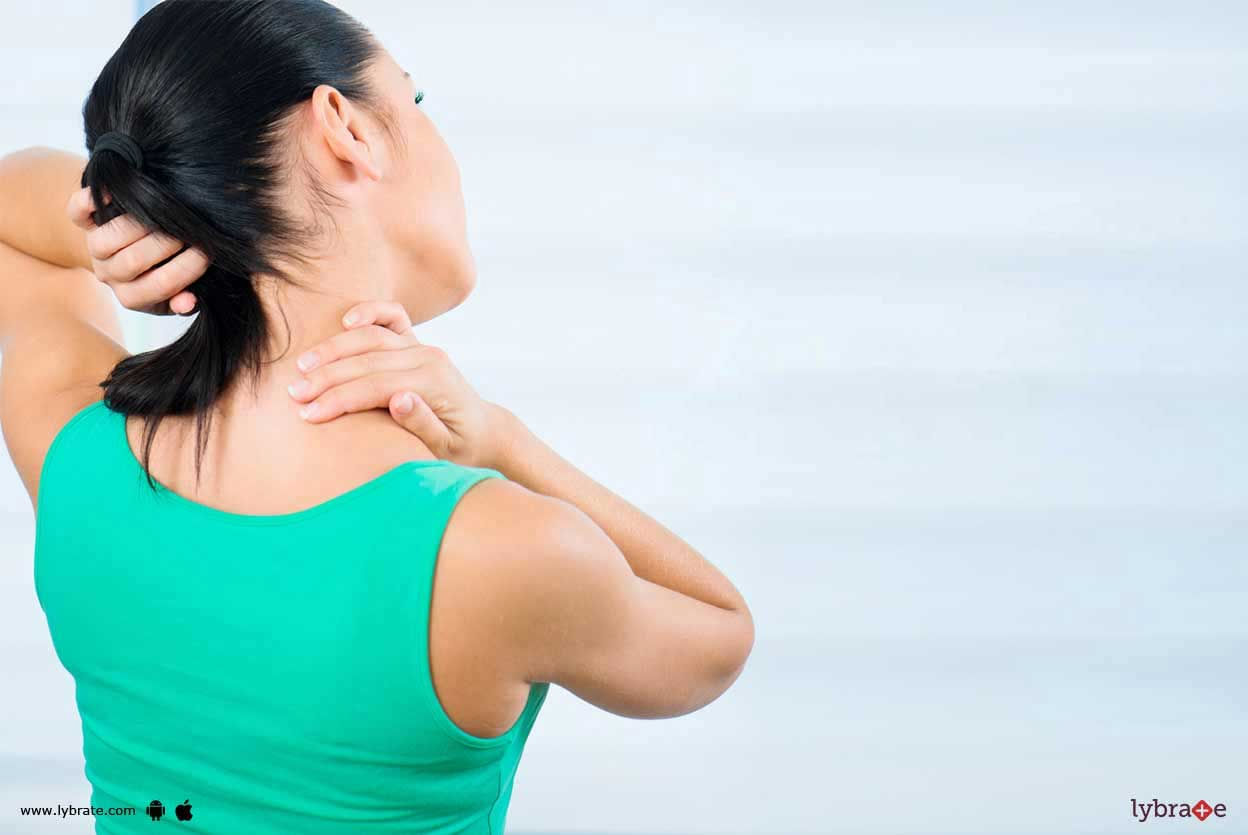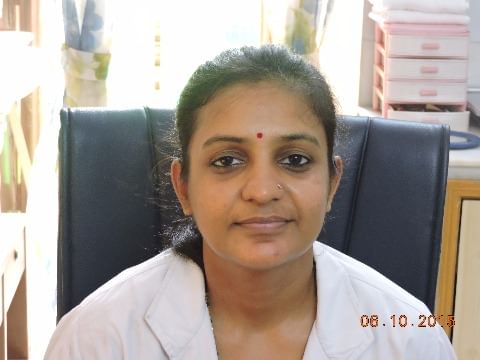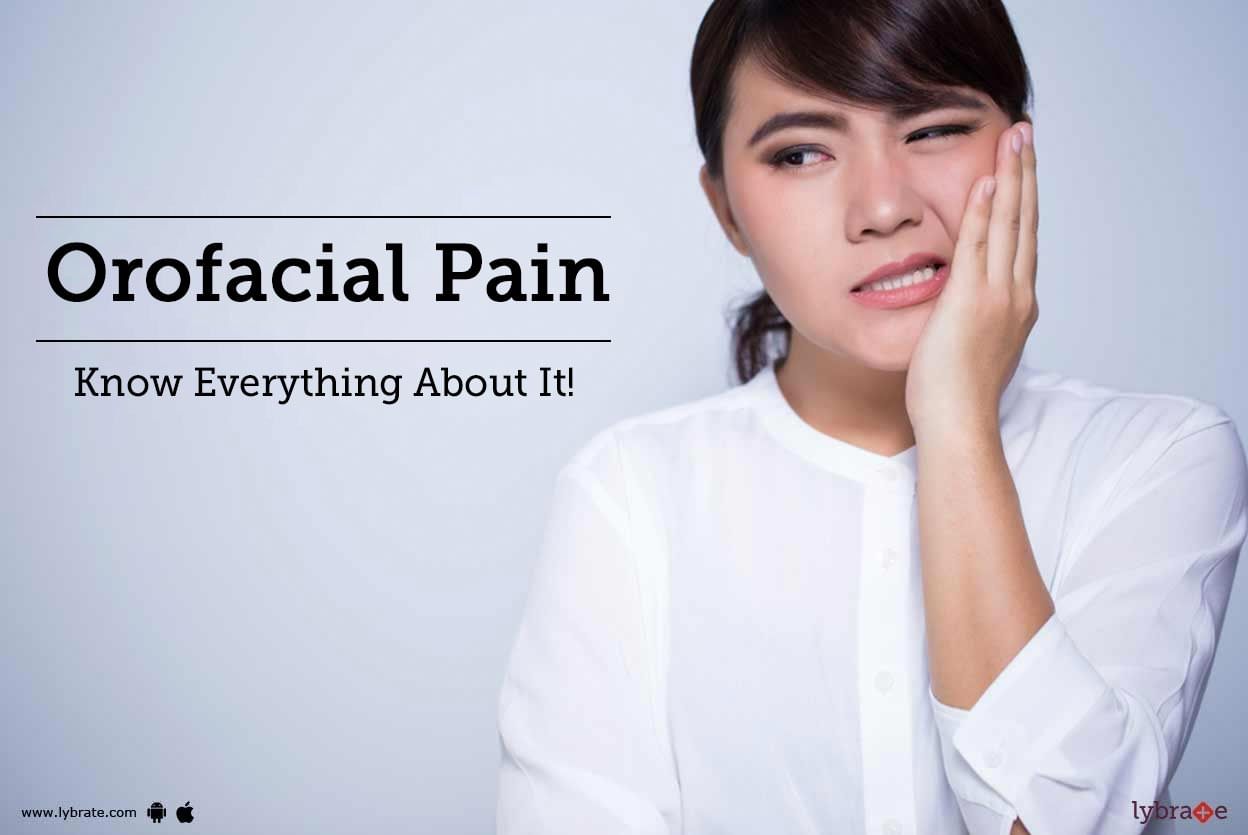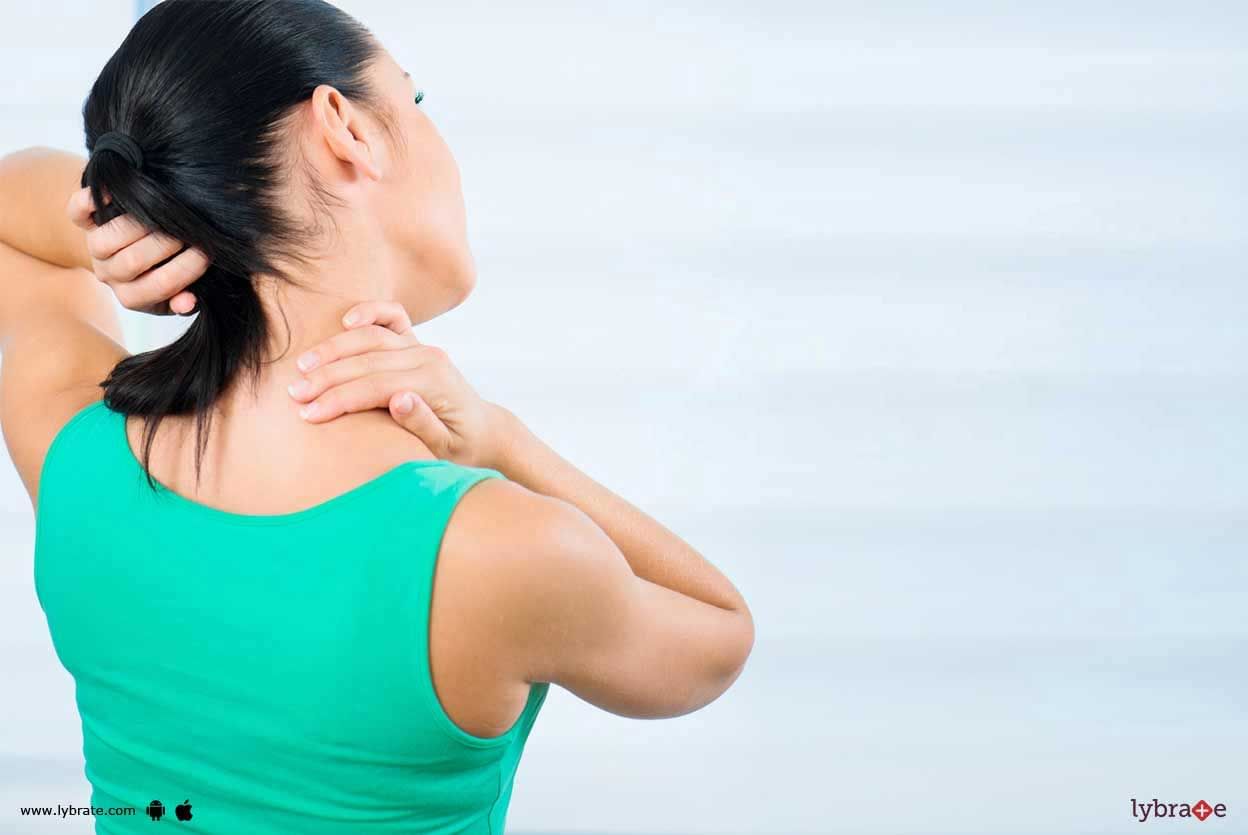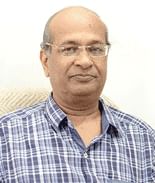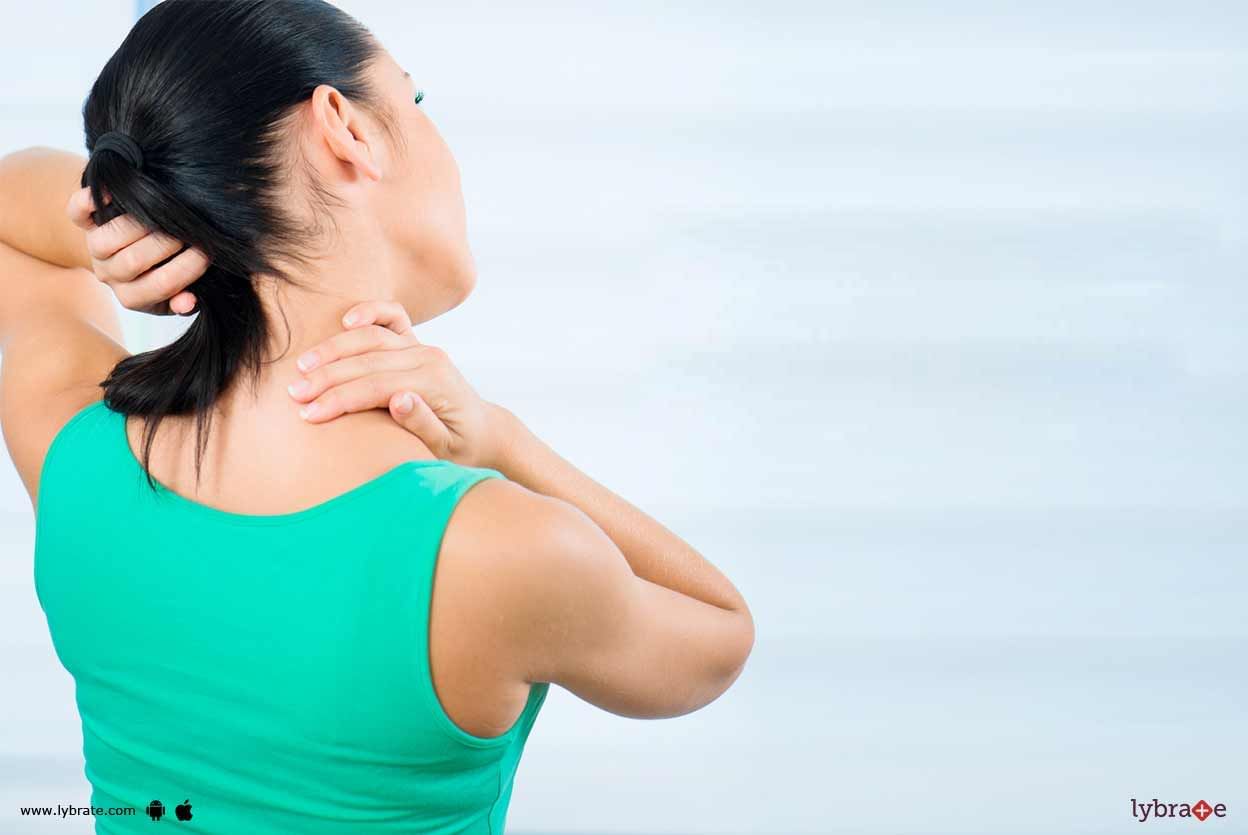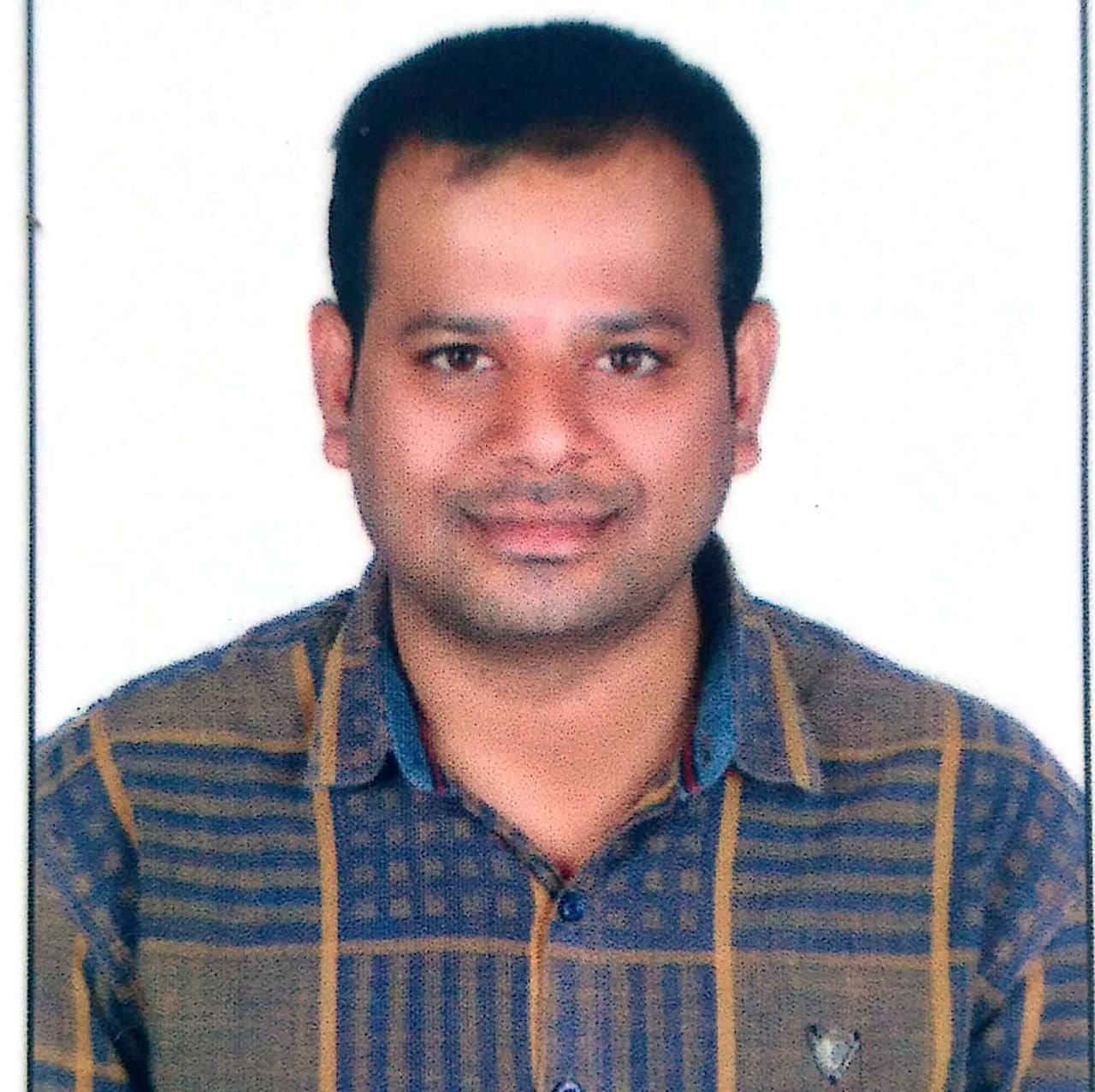Get the App
For Doctors
Login/Sign-up
About
Health Feed
Find Doctors
Health Packages
AllQ&AsTipsQuizzes
Neck Pain Tips
Last Updated: 2 years ago• Featured Tip
Share
Bookmark
Report
What is neck pain?
Neck pain is a common condition that causes discomfort in the neck area, which often originates from the muscles, nerves, bones, joints or other structures in the neck. Neck pain can vary from mild to debilitating depending on its cause and can be caused by any number of medical conditions.
Common causes of neck pain include muscle strain and tension, neck injuries or trauma, arthritis or disc degeneration. Treatment for neck pain may include medic...more
43 people found this helpful
Last Updated: 3 years ago• Featured Tip
Share
Bookmark
Report
1. Dr. Kartik shukla
Https://www. Lybrate. Com/ahmedabad/doctor/dr-kartik-shukla-orthopedist
Mbbs, Ms. - orthopaedics
22 years experience 1000 at clinic 200 online
;
Dr. Kartik shukla is a skilled orthopaedic surgeon who has assisted countless patients in finding relief from neck pain. He provides a comprehensive treatment approach that takes into account the individual's unique situation.
Dr. Shukla is aware that a variet...more
71 people found this helpful
Last Updated: 3 years ago• Featured Tip
Share
Bookmark
Report
1. Dr. George raj
Https://www. Lybrate. Com/bangalore/doctor/dr-george-raj-orthopedist ;
Fellowship in minimal access surgery, md - medicine, mbbs
24 years experience 300 - 600 at clinic 600 online
He has a great deal of experience in the field of orthopaedics and has helped a variety of patients with difficult conditions. He is quite knowledgeable in the field of physical medicine and rehabilitation. He obtained his renow...more
176 people found this helpful
Last Updated: 3 years ago• Featured Tip
Share
Bookmark
Report
Dr. Vishal nigam
Https://www. Lybrate. Com/delhi/doctor/dr-vishal-nigam-orthopedist ;
Mbbs, Ms. - orthopaedics, dnb - orthopaedics/orthopaedic surgery, fnb - spine surgery
24 years experience 800 at clinic 300 online
;
He has a stellar reputation as a doctor and has helped many people with difficult conditions. A specialist in orthopaedics, he has dedicated his career to helping people with their bones and jo...more
141 people found this helpful
Last Updated: 5 years ago• Featured Tip
Share
Bookmark
Report
Do you suffer from neck pain? Do you sit for long hours without backrest and are used to terrible pains in the neck at the end of the day? Neck pains are very common in people of all age. Though they have various reasons for developing, their solutions can be sometimes the same. If you are suffering from neck pain, then you can try these simple methods and ease it.
Drink lots of water: This is quite interesting. Not many know that a person is born with their spinal cord made of eighty p...more
Drink lots of water: This is quite interesting. Not many know that a person is born with their spinal cord made of eighty p...more
Last Updated: 5 years ago• Featured Tip
Share
Bookmark
Report
An unpleasant experience which not only disturbs the usual routine of a person but also the psychological peace and causes extreme discomfort is called pain. When this pain involves the region above the neck, below the orbitomeatal line and in front of the ear is called as orofacial pain.
Multiple causes for orofacial pain may exist and the symptoms may include such diverse findings as headaches, neck pain, ear pain, dental pain, facial burning or stabbing sensations, and jaw joint pain...more
Multiple causes for orofacial pain may exist and the symptoms may include such diverse findings as headaches, neck pain, ear pain, dental pain, facial burning or stabbing sensations, and jaw joint pain...more
Last Updated: 5 years ago• Featured Tip
Share
Bookmark
Report
The neck consists of vertebrae that extend from our upper torso to the skull. It further has cervical disks that absorb any kind of shock between the bones and prevent them from breaking. The muscles, bones and ligaments present in our neck support the head. Any kind of abnormalities and injuries can be a cause for neck pain. These include:
Muscle tension - This is usually caused by:
A poor posture
Working at a desk or in front of the computer for too long
Sleeping in ...more
Muscle tension - This is usually caused by:
A poor posture
Working at a desk or in front of the computer for too long
Sleeping in ...more
Last Updated: 5 years ago• Featured Tip
Share
Bookmark
Report
The most common cause of neck pain can be cervical disc disease. It is generally caused by the abnormality of the disc that is the cushion present between the vertebrae. The disc can get damaged because of arthritis or any unknown cause. When damaged it usually leads to inflammation or spasm of the muscles leading to neck pain. There are a number of pain medications, traction exercises, and physical therapy for minimizing neck pain.
However, these home-based remedies help to relieve pa...more
However, these home-based remedies help to relieve pa...more
Last Updated: 5 years ago• Featured Tip
Share
Bookmark
Report
Neck pain is fairly common among adults. It results from the soft tissues such as ligaments, muscles and tendons. It can result from spasms and muscle strain from neck problems such as disc degeneration and spinal stenosis. Be it a chronic pain or a sudden one, addressing it is important to get on with the daily office life.
Here is a list of some quick solutions, which when followed can give considerable relief from the pain:
Computer should be at eye level: While sitting at ...more
Here is a list of some quick solutions, which when followed can give considerable relief from the pain:
Computer should be at eye level: While sitting at ...more
Last Updated: 5 years ago• Featured Tip
Share
Bookmark
Report
As we get older, the physical components of the body start wearing out, and the effects are felt in the joints, ligaments, intervertebral discs, and spine. Spondylitis is a form of arthritis that affects the human spine. A degenerative spinal disorder, it originates in degradations in the quality of human bones.
Spondylitis may affect all parts of the spine and causes pain in the neck (cervical spine) and the back of the body (thoracic or lumbar spine). Symptoms of this degenerative ail...more
Spondylitis may affect all parts of the spine and causes pain in the neck (cervical spine) and the back of the body (thoracic or lumbar spine). Symptoms of this degenerative ail...more
Book appointment with top doctors for Neck Pain treatment
View fees, clinic timings and reviews
Ask a free question
Get FREE multiple opinions from Doctors
posted anonymously


